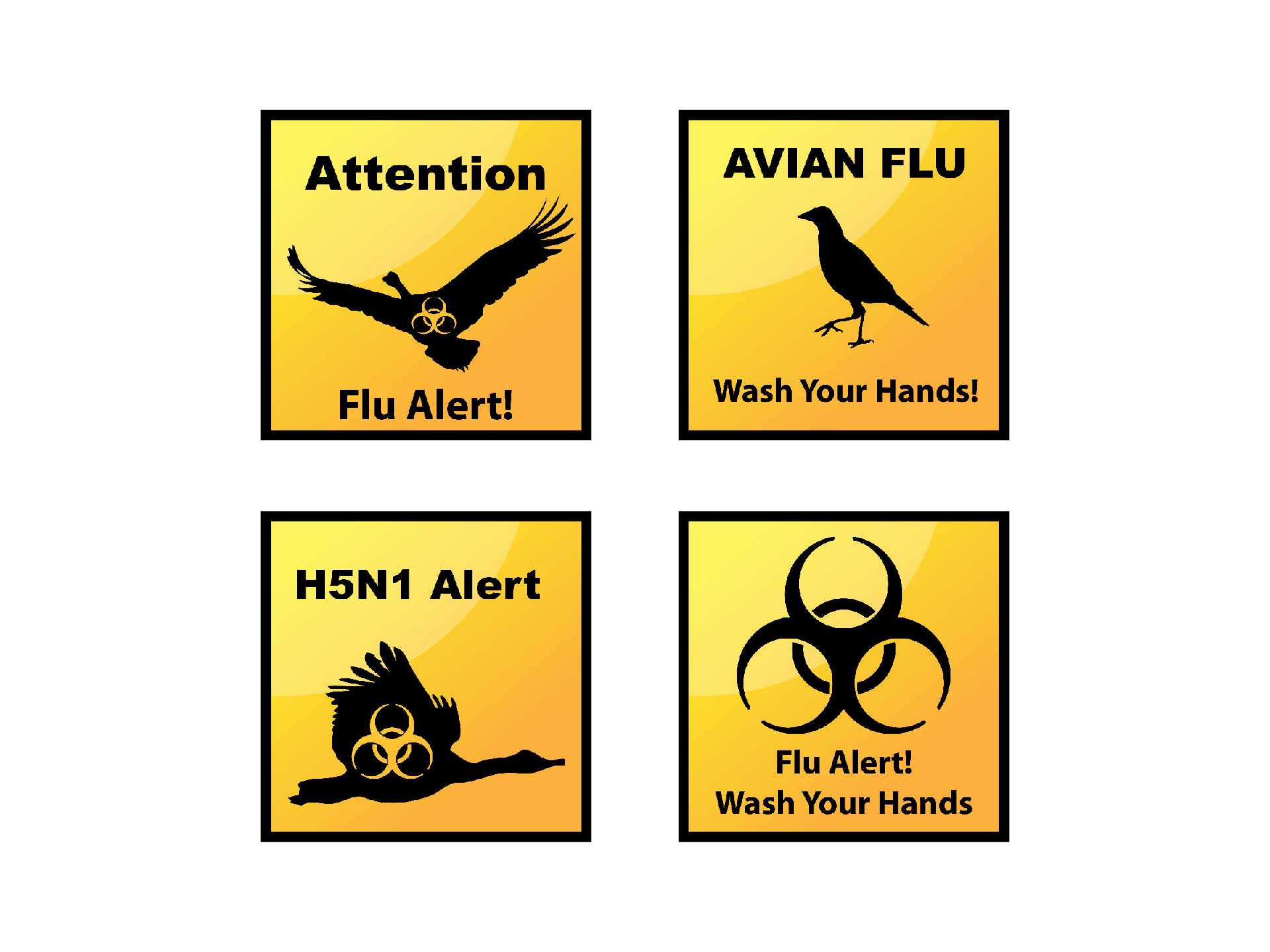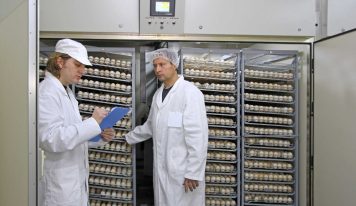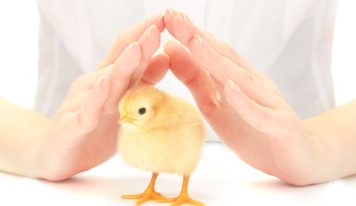Avian influenza (or bird flu) is a highly contagious viral disease that primarily affects birds, especially domestic poultry and wild waterfowl (which are its natural reservoir). It is caused by influenza A viruses (family Orthomyxoviridae).
Depending on their ability to cause severe disease in poultry, viruses are classified into two groups:
HPAI (Highly Pathogenic): causes high mortality in poultry.
LPAI (Low Pathogenicity).
Below we try to describe in a simple but clear way the context, the management in the poultry sector and the risks for human health.
Context and approach in the poultry sector
Avian influenza is a major concern for the poultry industry due to its high contagiousness and the economic risk posed by animal mortality and resulting trade restrictions.
How it is addressed
The industry and health authorities are addressing it with an approach based on biosecurity and surveillance. Key measures include:
Strict biosecurity
This is the most effective measure to prevent the entry and spread of the virus in livestock farms. This includes:
Access control by limiting entry to unauthorized persons and vehicles.
Hygiene and disinfection are achieved through regular cleaning and disinfection of facilities, equipment, and transportation.
Separation is the process of keeping domestic poultry separate from wild birds, particularly during periods of increased risk (such as during migration).
Waste management, which consists of the correct disposal of carcasses and contaminated litter.
Surveillance and monitoring
National surveillance plans that include active and passive checks on poultry and wild birds to promptly detect the presence of the virus.
Immediate reporting by breeders who must promptly report to the veterinary authorities any suspicious symptoms or abnormal increase in mortality.
Measures in case of an outbreak (Stamping Out):
The culling that is foreseen in the event of confirmation of HPAI strains, with the depopulation of all animals on the infected farm to limit the spread.
Remediation is the operation that follows demolition through thorough cleaning and disinfection of the structures.
The definition of protection and surveillance zones is practiced by defining restricted areas around the outbreak with controls on the movement of poultry and poultry products.
Vaccination (practiced only in some contexts) may be considered in certain situations, but depends on policies that vary from country to country and from virus strain to virus.
Risks to human health
The overall risk of infection to the human population is considered low; however, avian influenza is classified as a zoonosis, meaning a disease that can occasionally be transmitted from animals to humans, raising public health concerns and pandemic potential.
Transmission routes and populations at risk
Transmission to humans is therefore rare and almost always occurs through direct and close contact with infected birds (live or dead), with their secretions (such as feces) or with heavily contaminated environments.
The people most at risk are therefore:
Poultry sector workers: breeders, slaughterers, transport workers.
Veterinarians and operators involved in the culling or reclamation operations.
Easy human-to-human transmission has not been reported, but the main risk, which generates constant surveillance, is that the virus could mutate into a form capable of easily transmitting between people, triggering a pandemic.
Meat and egg consumption
There is no risk of transmission to humans through the consumption of poultry or eggs.
The avian influenza virus is sensitive to heat: thorough cooking (reaching adequate internal temperatures) and compliance with hygiene standards eliminate any risk to the consumer.
It is therefore essential to reassure consumers in the face of the understandable fears generated by outbreaks of Avian Influenza (HPAI).
The poultry sector employs an extremely robust and standardized defense system specifically to protect public health and the wholesomeness of final products.
The commitment and reliability of the sector is in fact concentrated above all on consumer protection.

The consumer at the center: guarantees on the final product
The most important message to convey is that, thanks to safety and cooking protocols, there is no risk to consumers purchasing and consuming poultry meat or eggs in Italy and the European Union.
The virus dies with cooking
Avian influenza is a temperature-sensitive virus. This means it cannot tolerate high temperatures.
Thorough and thorough cooking of meat (reaching at least 70°C at the core of the product) and eggs (whether hard-boiled or well-cooked) deactivates and completely destroys the virus.
Global health authorities, such as the European Food Safety Authority (EFSA) and the World Health Organization (WHO), agree that consuming cooked poultry products is safe.
The eggs are protected
Eggs, even if they come from potentially exposed hens, have a practically zero risk of infection from the HPAI virus, especially if they are intended to be cooked.
Furthermore, the eggs are subjected to rigorous hygiene and sorting standards that prevent external contamination.
Defending the sector: a “zero tolerance” system
The reliability of poultry products is based on a rigorous system of control and prevention that takes effect well before the product hits the shelves. The industry’s approach is zero tolerance for the spread of the virus.
Biosecurity as a barrier
Farms, even intensive ones, constantly invest in rigorous biosecurity (which we have already described) to create a physical and hygienic barrier between wild birds (the virus reservoir) and domestic poultry.
isolation – Structures are designed to prevent direct and indirect contact with wild birds (through netting, covers, and controlled water and feed management).
Hygiene and access control – Access to non-essential people and vehicles is limited. Those entering must follow strict disinfection procedures (changing clothes, disinfectant foot baths, etc.) to avoid mechanically spreading the virus.
Surveillance and immediate intervention
The poultry system is one of the most monitored and controlled in zootechnics.
This surveillance ensures that if a problem occurs, it is isolated immediately.
As?
With continuous monitoring – Breeders are obliged to constantly monitor the health of their flock, reporting any abnormal increase in mortality to the veterinary authorities (the so-called “Early Warning System”).
With drastic intervention (Stamping Out) – This is the maximum protection for the consumer. When an outbreak of Highly Pathogenic Avian Influenza (HPAI) is confirmed, the obligation to cull (depopulate) the birds immediately comes into force all animals on the infected farm. This ensures that no infected animal ever enters the food chain.
With cleanup and restricted zones – After culling, thorough cleanup and disinfection follow. “Protection Zones” and “Surveillance Zones” are established to block the movement of animals and products, containing the outbreak at its source.
This description we have made tells us that the commitment of the sector is therefore twofold:
prevents contact with the virus through biosecurity and, if prevention fails, eradicates the problem at its source with the immediate culling protocol, ensuring that products placed on the market are always safe.











